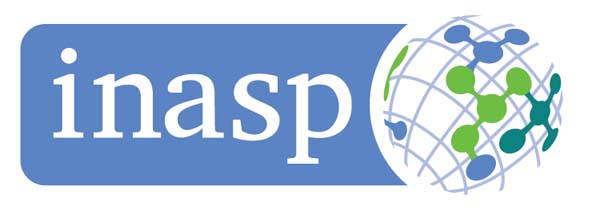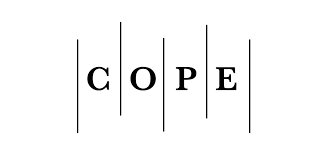DE-striping Augmented Images of Blood Cells using Deep Convolutional Neural Network
DOI:
https://doi.org/10.29304/jqcm.2021.13.2.820Keywords:
Augmented imagery, blood cells, de-striping, DCNN, Hyperion data, deep learningAbstract
The aim of this biomedical image processing-based research paper is to use augmented images of blood sample and Deep Convolutional Neural Network (DCNN) for the purpose of de-striping on Hyperion data to de-stripe on multicore platforms GPU. In order to reach our goal, we have started by analyzing the challenges associated with de-striping, Hyperion data and DCNN. A novel implementation pipeline of training, validating and evaluating stating from input an augmented blood image sample with the help analyzing the Hyperion data leading to the de-striping of augmented image blood sample by removing all the kernel black. What is clear is the high importance of applying the adequate pre-processing on Hyperion data because of low signal-to-noise ratio. By comparing the known layers of DCNN model for de-striping augmented images. The results obtained by applying the mentioned methods, it is revealed that all the higher stripes in an image as well as black color has been reduced and entirely associated with the Hyperion data alteration, and in contrast, the Hyperion imagery successfully corresponds to the de-striping of augmented image with an accuracy of 91.89% using DCNN model. The proposed DCNN is capable of reaching high accuracy within 150s after the launch of the evaluation phase and never reaches low accuracy. The pre-trained DCNN model approach would be an adequate solution considering de-striping as its high inference time is lower compared existing available methods which are not as efficient for de-striping.
Downloads
References
[2] R. Pande-Chhetri and A. Abd-Elrahman, “De-striping augmented imagery using wavelet transform and adaptive frequency domain filtering using machine learning,” ISPRS J. Photogramm. Remote Sens., vol. 66, no. 5, pp. 620– 636, Sept. 2011.
[3] I. Shen, Zhang, L. ANN-Based Algorithm for Destriping and Inpainting of Remotely Sensed Images. IEEE Trans. Geosci. Remote Sens. 2019, 47, 1492–1502.
[4] L. Herrmann, I. Koren, “Hyperspectral spaceborne imaging of dust-laden flows: Anatomy of Saharan dust storm from the Depression,” Remote Sensing of Environment vol. 12, no. 1, pp. 3– 8, 2015.
[5] A. Zhou, Fang, H.; Yan, L.; Zhang, T.; Hu, J. Removal of stripe noise with spatially adaptive unidirectional total variation. 2016, 125, 2756–2762.
[6] Kruse, F.A., “Mineral Mapping with AVIRIS and EO-1 Hyperion,” Proceedings of the 12th JPL Airborne Geoscience Workshop, Pasadena, California: 149−156 (2003).
[7] P. Gong, R. Biging, G.S., Larrieu, M.R., “Estimation of deep learning models using vegetation Indices Derived from Hyperion Hyperspectral Data,” IEEE Transactions on Geoscience and Remote Sensing vol. 2, no. 7, pp. 1– 6, 2015.
[8] M. Gross, V. Klemas, “The use of DCNN and Imaging Spectrometer data to differentiate marsh vegetation,” Remote Sensing of Environment vol. 22, no. 4, pp. 60– 66, 2018.
[9] N. Rinker, “Hyperspectral Imagery, A New DCNN Technique for Targeting and Intelligence,” Presented at the Army Science Conference, Durham, vol. 6, no. 4, pp. 20– 26, Sept. 2016.
[10] G. Ghosh, S. Kumar, K. Saha, “Hyperspectral Satellite Data in Mapping Salt-Affected Soils Using Linear Spectral Unmixing Analysis,” Journal of the Indian Society of Remote Sensing vol. 8, no. 11, pp. 71– 76, 2016.
[11] A. Chudnovsky, E. Ben, A. Kostin, “Mineral content analysis of atmospheric dust using hyperspectral information from space,” Geophysical Research Letters vol. 16, no. 14, pp. 6– 13, 2017.
[12] Neamah Hussein, K. (2018). Video Frames Edge Detection of Red Blood Cells: A Performance Evaluation. Journal of Al-Qadisiyah for Computer Science and Mathematics, 10(1), Comp Page 16 - 27. https://doi.org/10.29304/jqcm.2018.10.1.347.
[13] Turky, S., Ahmed AL-Jumaili, A., & Hasoun, R. (2021). Deep Learning Based On Different Methods For Text Summary: A Survey. Journal of Al-Qadisiyah for Computer Science and Mathematics, 13(1), Comp Page 26-. https://doi.org/10.29304/jqcm.2021.13.1.766.
[14] Habib Al- Sharoot, M., & Yousif Abdoon, E. (2017). Prediction by using Artificial Neural Networks and Box-Jenkins methodologies: Comparison Study. Journal of Al-Qadisiyah for Computer Science and Mathematics, 9(2), Stat Page 1 - 16. https://doi.org/10.29304/jqcm.2017.9.2.325.
[15] Mustafa Siddeq, M., & Abdullah Anwar, D. (2017). Using Perceptron Neural Network and Genetic Algorithm for Image Compression and Decompression. Journal of Al-Qadisiyah for Computer Science and Mathematics, 3(1), 290-296. Retrieved from https://qu.edu.iq/journalcm/index.php/journalcm/article/view/261.













